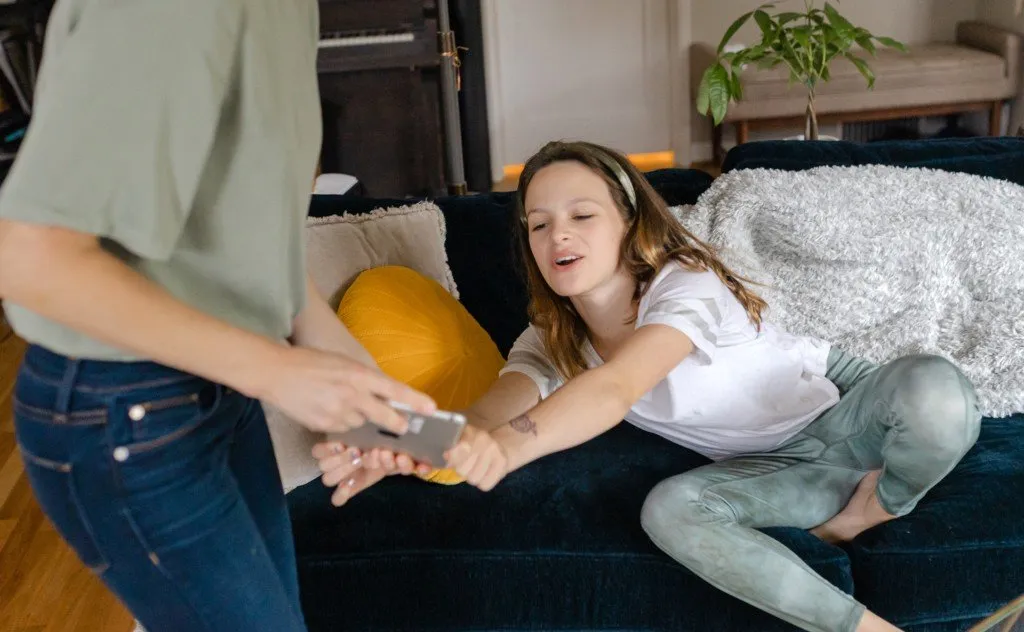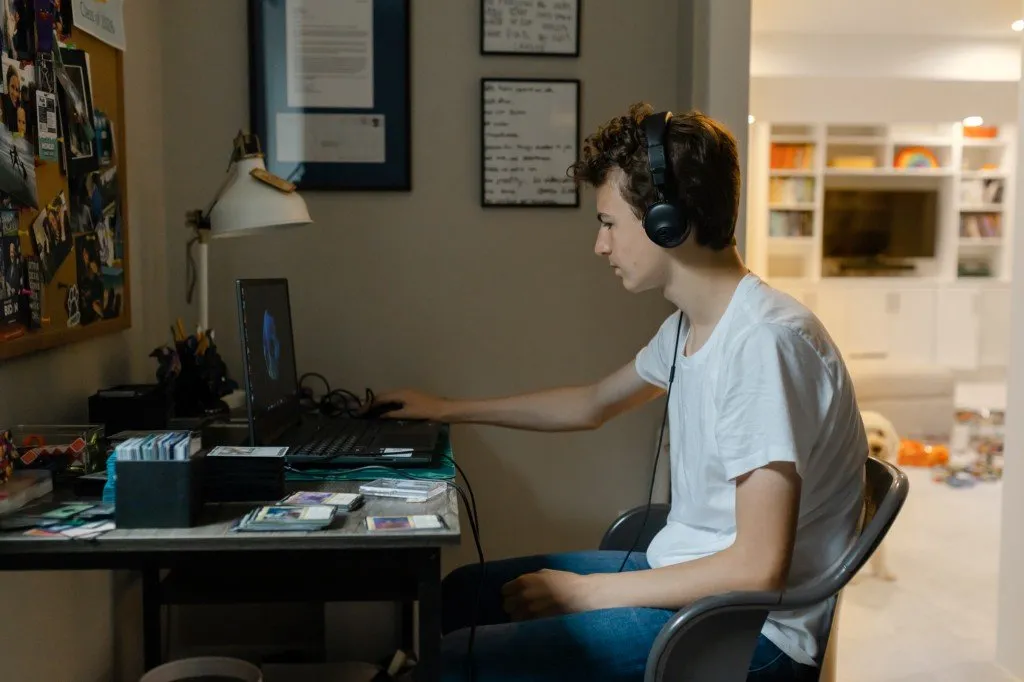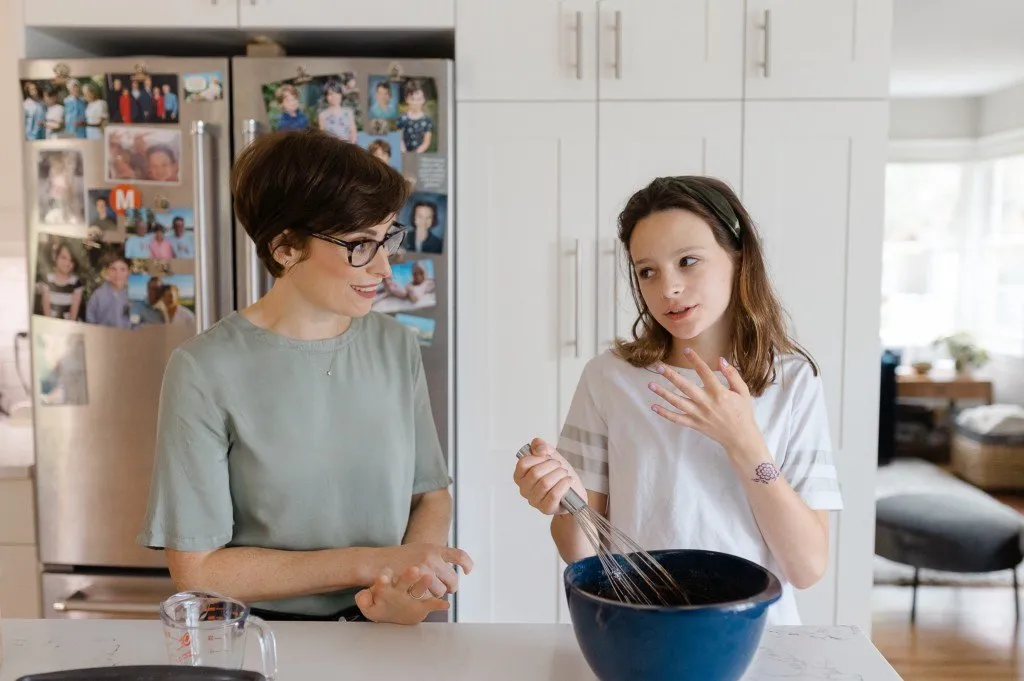Nov 2, 2022
I am asked this question all the time: “What parental controls do you recommend?”
The reality is, I don’t recommend parental controls. Mostly, I recommend parenting.*
Yes, these are my children. On screens.
*(I’m being cheeky. The tech industry would love for parents to feel responsible for all family screentime conflicts. It means they don’t have to be accountable, and they absolutely should be. But just because it isn’t our fault as parents, it is still our responsibility to parent. We have some work to do too. It would be more accurate for me to reply: “Parental controls are imperfect at best, and may in fact may make things worse.” But that doesn’t roll off the tongue. Additionally, for simplicity’s sake, in this essay “parental controls” will refer to any apps, software, monitoring or filtering services, special routers, or limits set by a parent’s phone. Yes, I know I’m lumping a lot of things together.)
This isn’t to say that parental controls can’t be one tool in your toolbox. If you have ones that work for your family, that’s fine — keep them.
But it is critical that parents know that simply having parental controls does not exempt us from teaching our children about how to be safe online, how to deal with scary situations or images, or how to balance tech use intentionally.
“Simply having parental controls does not exempt us from teaching our children.”
That is our job. We must, as writer Devorah Heitner says, be the mentors, not just the monitors.
After talking to hundreds of parents, I’ve found there are (at least) ten reasons why parental controls can’t be the end-all, be-all we wish it to be:
Kids find the workarounds. Always. Every single parent who reaches out to me has a story about a parental control gone awry. Comment threads are full of examples of parents who thought they had things locked down, only to discover their kids adjusted the clock to increase screentime limits, used Google docs as a chatting platform, or found a backdoor to TikTok through Pinterest. (That’s a thing. You should check). Plus, let me state the obvious: kids know how to Google. They can figure out how to get around parental controls. (Remember how you used to program the VCR for your parents? Yeah.)

The struggle is real.
2. Children are not small adults. In spite of what we may think, say, or hope, children cannot self-regulate, monitor their own use, or understand the complexities of “permanent” and “public.'' Your child might be absolutely brilliant– her brain will still not be fully developed until she is in her 20s or even 30s. That means teens can’t be expected to self-regulate yet either. (Remember adolescence? Risk taking and impulsive decision-making is par for the course). Parental controls do not teach children how to self-regulate; they outsource regulation to a tech company.
“Parental controls do not teach children how to self-regulate; they outsource regulation to a tech company.”
3. Parental controls are a ton of work for parents . There is a lot of set-up and maintenance. They are cumbersome, complicated, confusing, and designed to put the burden of monitoring onto parents, rather than hold accountable the tech companies who designed them this way in the first place. Additionally, when parents rely heavily on parental controls, guess what parents are going to be doing more of — looking at their own phones to monitor screentime. Ironic.
4. It’s weird to use technology to solve a problem created by technology. Tech companies make money off the time we spend engaging with content. These platforms are built to be addictive, convincing kids (and adults) that we need them to fit in, learn, or be successful. Then tech companies throw the responsibility of keeping children safe back onto parents. We should be protesting, writing letters, and marching in the streets to push back on Big Tech for creating products that refuse to keep children’s development and best interests at heart in the first place. Tech companies make money off our kids’ screen use by telling us to manage it. And in order to manage it, we have to pay for and download an app. Which we then have to monitor. And our kids still find a way to work around.
5. Parental controls reinforce inequities. Higher quality parental controls cost money, expertise, time, and tech-savvy know-how. Expensive routers and filtering software require subscriptions. Some families simply will not be able to afford or manage these protections. Yet again, the children of families with the resources to add even a weak layer of protection benefit while those who lack access or resources are exposed to more harms.
6. Don’t be fooled. Tech companies are not being altruistic. Even though tech companies tell us they’re making changes to help parents and better protect children, it’s not because they’re being nice… they are legally obligated to do so. The Children’s Online Privacy Protection Act ( COPPA ) requires that tech companies make some effort to protect underage users. But tech companies do the bare minimum and put most of the burden back on parents to manage. Think about it — if the controls actually worked effectively, tech companies would make a lot less money. And that business model isn’t changing any time soon.
“If parental controls actually worked effectively, tech companies would make a lot less money.”
7. Tech companies want parents to feel guilty. It is much easier to put the burden of managing screentime and protecting children onto parents. If companies were actually required to design products for children over profit, they would make less money. So they kick the can back to parents and say, “This is your fault,” even as their products hook and hold our attention. Parents already have plenty to feel guilty about. Doing this is just mean. (And it’s not a fair fight. More about Persuasive Design here and here and here ).

Can we talk about posture when using screens, too?!
8. Parental controls do not monitor in-app content. I want to shout this from the rooftops. So often, parents download or purchase parental controls thinking that in-app content will be monitored or filtered. IT. IS. NOT. This is because the tech companies (especially Apple) have made it so that third parties cannot monitor in-app content– if they could, the algorithms and persuasive technologies would definitely decrease the amount of time children spend engaging with their product. Which, again, would lead to lower profits. A monitoring tool might alert a parent if an app is downloaded; but it will not allow parents to monitor the content within the app once it is downloaded.
9. Children learn the wrong lesson from parental controls. Different parents worry about different online dangers—porn, violence, eating disorders, self-harm, suicide. There is a long list of terrible stuff that can be found on the internet. But no app, control, software, or router is a replacement for teaching children what to do when they see something that is scary or worrisome. And they will see it, whether there are protections in place or not. (Have you seen the internet?!). Ideally, we want our children to tell us when they encounter content that doesn’t feel right. Unfortunately, when we rely on controls without (or instead of) teaching children about trust and consent, we run into different problems. Children who do not feel like they can talk to their parents about this may feel more inclined to sneak a social media account or outsmart controls.
“No app, control, software, or router can replace teaching children what to DO when they see something that is scary or worrisome on the internet.”
10. Parental controls cannot replace real-life relationships. Parental controls are not tools that teach our children about safe searching, privacy protection, or media literacy. Teaching these topics is our job as parents (and schools, I would argue, especially as they use more tech). Parenting is not something we can outsource to an app. Parental controls lull us into a false sense of security — “If we just have X, our child will be safe.” If we want our children to think critically, ask for help when they need it, and know what to do when, not if, they see porn or violent content, we have to focus on building our relationships first.

Building relationships through cake mix.
Not everyone will agree with me on this.
That’s okay. You don’t have to.
I hear all the time from well-intentioned parents who thought they were doing everything right until all of a sudden, they weren’t.
It’s not our fault, remember. But it is our job to be the parent.
And while parental controls can be one layer of protection, please don’t have high expectations of them. They are not the panacea you want them to be.
Until the tech business model changes, the onus will continue to be on parents to fix, prevent, and solve these problems. Whether that is fair or not.

